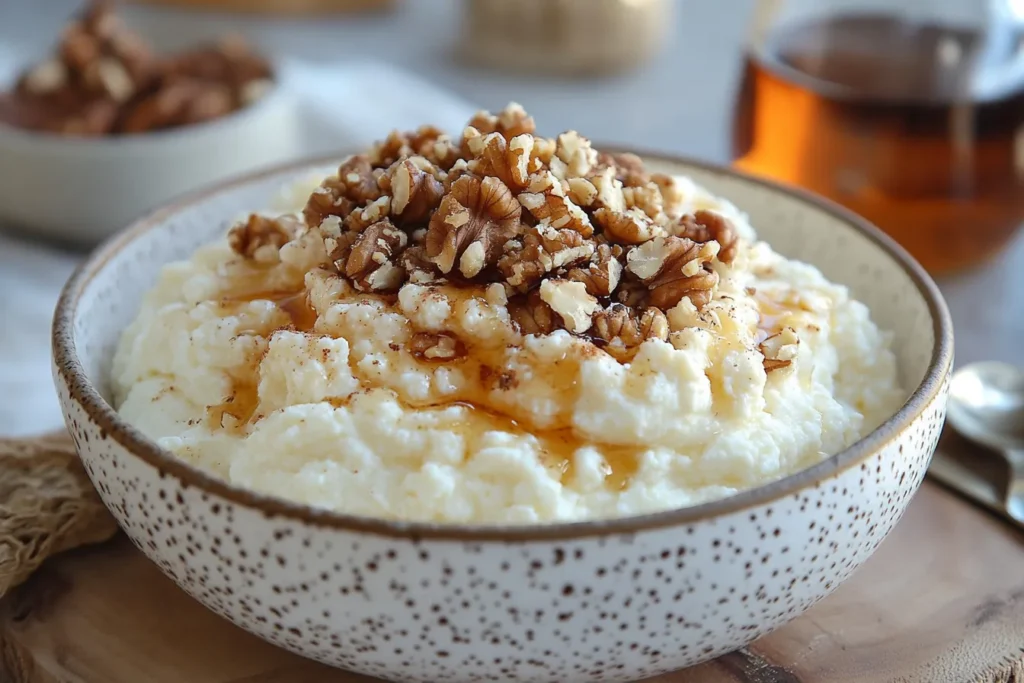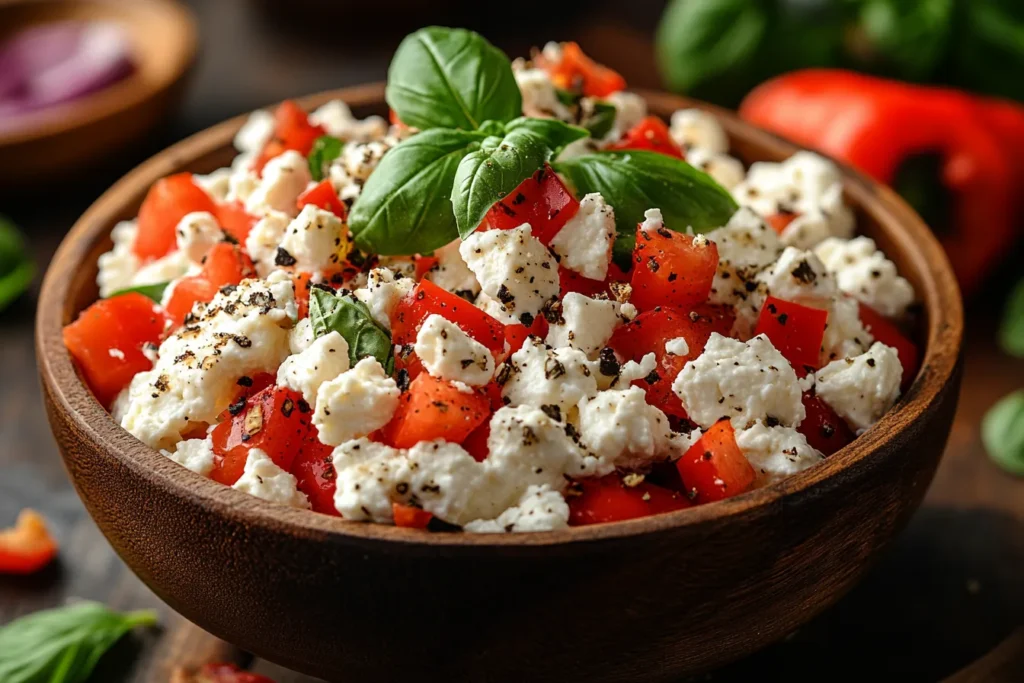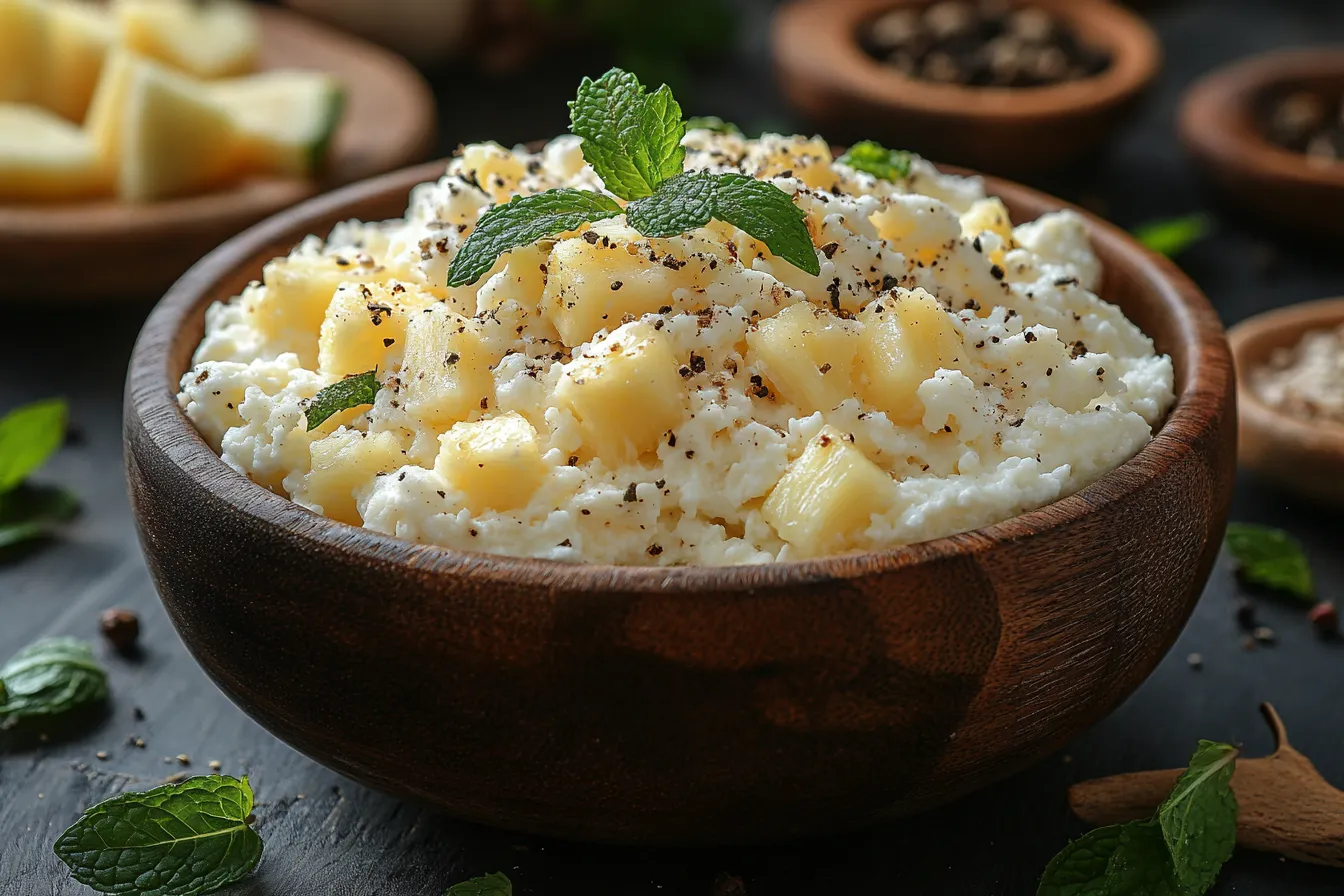Have you ever stood in the dairy aisle, staring at a tub of cottage cheese, and wondered, Is cottage cheese actually healthy? If so, you’re not alone. With all the talk about protein-packed foods and weight-loss-friendly options, it’s easy to get confused about which foods truly live up to the hype. Cottage cheese might not seem like the trendiest choice, but it’s been a quiet hero in the nutrition world for decades. Whether you’re trying to shed a few pounds, build muscle, or simply eat smarter, cottage cheese could be the answer you’ve been looking for. Let’s dive in and discover what makes this humble dairy product such a powerful addition to your plate.
What is Cottage Cheese?
Cottage cheese is a fresh, creamy cheese made from curds of milk. It has a slightly tangy flavor and a soft, lumpy texture. Unlike aged cheeses, cottage cheese is not pressed, which gives it its unique consistency. Available in various fat levels such as low-fat, full-fat, and fat-free, it caters to different dietary preferences. Its high protein content and versatility make it a popular choice for health-conscious individuals and food enthusiasts alike.
This dairy product is frequently consumed as a standalone snack, in salads, or as an ingredient in recipes ranging from savory dishes to desserts.
History of Cottage Cheese
Cottage cheese has roots that trace back to ancient times when farmers and villagers utilized leftover milk to create cheese. Its name originates from the practice of making it in cottages using milk that was naturally curdled.
In the 19th and early 20th centuries, cottage cheese gained popularity in Europe and North America as a nutritious, affordable food source. By the mid-1900s, it had become a staple in the diet of health enthusiasts. Today, modern manufacturing methods ensure consistent quality, and its appeal continues to grow globally. Check out more recipes here.
Types of Cottage Cheese
Cottage cheese is available in a variety of forms to suit different tastes and health needs:
- Full-fat cottage cheese: Contains the highest fat content, offering a rich and creamy flavor.
- Low-fat cottage cheese: A lighter option ideal for calorie-conscious individuals.
- Fat-free cottage cheese: Designed for those avoiding fats, though slightly less creamy.
- Flavored varieties: Includes options like herb-infused, fruit-added, or savory-spiced cottage cheese.
Nutritional Composition of Cottage Cheese

Cottage cheese is a powerhouse of nutrition:
- Macronutrients: High in protein and low in carbohydrates, making it perfect for muscle building and weight management.
- Micronutrients: A great source of calcium, phosphorus, selenium, and vitamins B12 and B2.
A half-cup serving provides approximately:
- Protein: 14 grams
- Calories: 100-120, depending on fat content
- Calcium: 10-15% of daily recommended intake
Comparing Cottage Cheese with Other Cheeses
Cottage cheese offers unique advantages compared to other cheeses:
- Ricotta cheese: While ricotta is creamy, it contains more fat and fewer proteins than cottage cheese.
- Feta cheese: Tangier and saltier than cottage cheese but also higher in sodium.
- Cream cheese: Far richer in fat, making cottage cheese the healthier choice for calorie-conscious diets.
Cottage cheese’s versatility, combined with its high protein and lower calorie content, makes it a preferred option for balanced meals.
How Cottage Cheese is Made
The production of cottage cheese involves a straightforward process:
- Curdling: Milk is acidified with vinegar, lemon juice, or bacterial cultures.
- Heating: The mixture is gently heated to separate curds from whey.
- Draining: The curds are drained of whey without pressing them, preserving the soft texture.
- Mixing: Cream, salt, or other ingredients may be added to enhance flavor and texture.
This process results in the characteristic lumpy texture and mild flavor.
Variations Across Cultures
Cottage cheese takes on different forms across cultures:
- India: Known as paneer, it is pressed into a firm block and used in savory dishes.
- Russia and Eastern Europe: Referred to as tvorog, it is consumed with fruits or in desserts.
- Middle East: Often blended with herbs and served as a spread or dip.
- Mexico: Fresh cheeses like queso fresco resemble cottage cheese in texture and mild taste.
Cottage Cheese vs. Greek Yogurt
Both cottage cheese and Greek yogurt are high in protein and low in calories, but they differ in texture and application:
- Protein: Cottage cheese generally has more protein per serving.
- Taste: Greek yogurt is tangier, while cottage cheese is milder.
- Culinary Use: Cottage cheese works well in both savory and sweet recipes, whereas Greek yogurt is often used in smoothies and dips.
Shelf Life and Storage Tips
Proper storage is crucial to maintain the freshness of cottage cheese:
- Refrigeration: Always store in the refrigerator at 35°F to 40°F.
- Airtight Containers: Use tightly sealed containers to prevent exposure to air and moisture.
- Consumption Timeline: Consume within 7-10 days after opening.
If you notice an off smell, discoloration, or mold, it’s best to discard the product.
Popular Brands of Cottage Cheese
Several popular brands provide high-quality cottage cheese:
- Daisy Cottage Cheese: Known for its clean label and fresh taste.
- Breakstone’s: Offers various fat levels and is widely available.
- Good Culture: Focuses on organic ingredients and probiotic-rich options.
- Kraft: A household name with consistent quality.
- Trader Joe’s: Known for its creamy texture and budget-friendly options.
These brands cater to different preferences, ensuring there’s a suitable choice for every consumer.
Is Cottage Cheese Healthy? An Overview
Cottage cheese is widely regarded as a healthy food due to its impressive nutritional profile. It’s a nutrient-rich food that’s low in calories, abundant in protein, and full of vital vitamins and minerals. Its versatility in meals makes it a staple for individuals focusing on balanced diets, weight management, or muscle building.
However, like any food, moderation is key. The sodium content in cottage cheese can be a concern for those with high blood pressure or salt-sensitive conditions. Nonetheless, its health benefits generally outweigh potential drawbacks, making it a popular choice among health enthusiasts. Check out more recipes here.
High Protein Content in Cottage Cheese
Protein is one of the standout features of cottage cheese. A single serving can provide up to 28 grams of protein, depending on the brand and fat content.
Benefits of High-Protein Diets:
- Muscle repair and growth: Especially beneficial for athletes and bodybuilders.
- Appetite control: Protein helps you feel fuller for longer, reducing overeating.
- Energy metabolism: Protein supports overall bodily functions by aiding enzymatic activities.
Cottage cheese is a convenient, cost-effective way to meet daily protein requirements.
Cottage Cheese for Weight Loss
Reasons It Supports Weight Loss:
- Low calorie density: Fewer calories for a satisfying portion size.
- Satiety: Protein curbs hunger, helping to manage portion control.
- Versatility: Can be incorporated into various meals and snacks, from breakfast bowls to dinner sides.
Paired with exercise and other healthy foods, cottage cheese is an effective addition to weight-loss strategies.
Bone Health and Calcium in Cottage Cheese
Cottage cheese is a good source of calcium, a mineral essential for maintaining strong bones and teeth.

How Calcium Benefits Bone Health:
- Bone density: Regular calcium intake helps prevent osteoporosis.
- Cell signaling: Supports muscle contractions and nerve functions.
- Repair and growth: Essential for children, teenagers, and older adults.
Though it doesn’t provide as much calcium as some aged cheeses, it still contributes significantly to daily calcium requirements.
Cottage Cheese for Muscle Building
Cottage cheese is a favorite among bodybuilders and fitness enthusiasts due to its high protein and casein content.
Why It’s Ideal for Muscle Building:
- Slow-digesting casein: Provides a sustained release of amino acids, perfect for overnight muscle recovery.
- Leucine content: An amino acid critical for muscle protein synthesis.
- Post-workout recovery: Paired with fruits or a small carbohydrate source, it becomes a great recovery snack.
For those aiming to build or maintain muscle, incorporating cottage cheese into daily meals is a practical choice.
Low-Fat vs. Full-Fat Cottage Cheese
Cottage cheese is available in both low-fat and full-fat versions, each with its own advantages:
Low-Fat Cottage Cheese:
- Lower calorie content: Suitable for weight management.
- Reduced fat: Ideal for heart health-focused diets.
Full-Fat Cottage Cheese:
- Creamier texture: Enhances flavor and satisfaction.
- Healthy fats: Provides energy and aids in nutrient absorption.
The choice between low-fat and full-fat depends on personal health goals and taste preferences.
Cottage Cheese and Digestive Health
Cottage cheese can benefit gut health, especially when it contains probiotics.
Benefits for Digestion:
- Probiotic-rich varieties: Support a healthy gut microbiome.
- Ease of digestion: For most people, it’s gentle on the stomach compared to aged cheeses.
- Lactose content: Lower than milk, making it easier for some lactose-sensitive individuals to tolerate.
However, those with severe lactose intolerance should choose lactose-free options.
Sodium Concerns in Cottage Cheese
Sodium content in cottage cheese can be high, with some brands containing up to 400 milligrams per serving.
Managing Sodium Intake:
- Low-sodium options: Many brands now offer reduced-sodium varieties.
- Rinse before consumption: Gently rinsing cottage cheese can help remove excess salt.
- Pair with low-sodium foods: Balance meals with fresh fruits, vegetables, or unsalted nuts.
Moderating sodium intake is especially important for individuals with hypertension or kidney concerns.
Lactose Intolerance and Cottage Cheese
While cottage cheese contains less lactose than milk, it may still cause issues for lactose-intolerant individuals.
Options for Lactose-Sensitive People:
- Lactose-free cottage cheese: Widely available in many stores.
- Probiotic varieties: Some find probiotic-rich cottage cheese easier to digest.
- Small portions: Test tolerance by consuming smaller amounts.
Understanding personal tolerance levels is key to enjoying cottage cheese without discomfort.
Cottage Cheese for Diabetics
Cottage cheese can be a smart choice for diabetics due to its low carbohydrate content.
Benefits for Blood Sugar Management:
- Low glycemic index: Has minimal impact on blood sugar levels.
- Protein content: Helps stabilize glucose levels.
- Pairing potential: Combine with high-fiber foods like berries or nuts for optimal blood sugar control.
Diabetics can incorporate cottage cheese into their diet while monitoring portion sizes and overall carbohydrate intake.
How to Incorporate Cottage Cheese into Your Diet
Cottage cheese is one of the most versatile ingredients you can add to your diet. Its mild flavor makes it adaptable for both sweet and savory dishes. Whether you’re looking for a quick snack, a nutritious breakfast, or a creative addition to your meals, cottage cheese offers endless possibilities. Check out more recipes here.
Ideas for Including Cottage Cheese:
- As a topping for toast or crackers.
- Mixed into salads for extra protein.
- Blended into smoothies for creaminess.
- As a substitute for ricotta in pasta dishes.
- Spread on bagels with herbs for a savory twist.
From simple combinations to elaborate recipes, cottage cheese fits seamlessly into a variety of meals.
Breakfast Ideas Featuring Cottage Cheese
Breakfast is a great opportunity to include cottage cheese, offering a high-protein start to your day.

Easy Breakfast Recipes:
- Cottage Cheese and Fruit Bowl: Top with fresh berries, honey, and a sprinkle of granola.
- Protein Pancakes: Blend cottage cheese with eggs and oats for a fluffy pancake batter.
- Savory Breakfast Scramble: Mix cottage cheese into scrambled eggs with spinach and tomatoes.
These meals are quick, nutritious, and perfect for busy mornings.
Savory Recipes Using Cottage Cheese
Cottage cheese shines in savory dishes, adding creaminess and a protein boost.
Savory Recipe Ideas:
- Stuffed Bell Peppers: Use cottage cheese as part of the filling, mixed with quinoa and vegetables.
- Cottage Cheese Dip: Blend with garlic, herbs, and a touch of olive oil for a creamy dip.
- Baked Ziti: Substitute ricotta with cottage cheese for a lighter, high-protein pasta dish.
Its mild flavor allows it to complement spices and vegetables in a variety of savory meals.
Cottage Cheese Desserts
Cottage cheese is a surprising but excellent ingredient for desserts, offering creaminess without excessive calories.
Dessert Recipes:
- Cheesecake: Blend cottage cheese with eggs, sugar, and vanilla for a lighter version of this classic dessert.
- Cottage Cheese Mousse: Whip it with cocoa powder and a sweetener for a high-protein treat.
- Fruit Parfaits: Layer cottage cheese with fresh fruit and crushed nuts for a visually appealing dessert.
These desserts are not only delicious but also healthier alternatives to traditional sweets. Check out more recipes here.
Cottage Cheese as a Snack
For a quick and nutritious snack, cottage cheese is hard to beat.
Snack Pairing Ideas:
- With Fresh Veggies: Use as a dip for carrots, celery, or cucumber.
- Fruit and Nut Pairing: Combine with apple slices and almonds for a sweet-and-savory combination.
- Rice Cakes: Spread cottage cheese on rice cakes and top with avocado or tomatoes.
Its high protein content ensures you stay full and energized between meals.
Cottage Cheese Smoothies
Cottage cheese adds a creamy texture and protein boost to smoothies, making them more satisfying.
Smoothie Recipes:
- Berry Blast: Blend cottage cheese with strawberries, blueberries, almond milk, and a touch of honey.
- Green Smoothie: Combine with spinach, pineapple, and a banana for a nutrient-packed drink.
- Chocolate Protein Shake: Blend cottage cheese with cocoa powder, a scoop of protein powder, and milk for a decadent treat.
These smoothies are perfect as meal replacements or post-workout snacks.
Substituting Cottage Cheese in Recipes
Cottage cheese can be a great substitute for other ingredients, reducing calories and adding protein.
Common Substitutes:
- Ricotta Cheese: Use in lasagna or stuffed shells.
- Sour Cream: Mix into baked potatoes or dips.
- Heavy Cream: Blend into soups or sauces for a lighter option.
Its adaptability makes it a go-to ingredient in healthier recipe makeovers.
Homemade Cottage Cheese Recipes
Making cottage cheese at home is simple and rewarding.
Step-by-Step Guide:
- Heat milk over medium heat until it simmers.
- Add an acid like vinegar or lemon juice to curdle the milk.
- Strain the curds through a cheesecloth, letting the whey drain.
- Rinse the curds under cold water and add a pinch of salt for flavor.
Homemade cottage cheese has a fresh taste and allows you to control ingredients.
Pairing Cottage Cheese with Other Foods
Cottage cheese pairs well with a wide range of foods to create balanced and flavorful meals.
Best Pairings:
- Fruits: Strawberries, peaches, and pineapple add natural sweetness.
- Nuts and Seeds: Almonds, walnuts, and chia seeds enhance texture and nutrition.
- Herbs and Spices: Dill, parsley, and black pepper elevate savory dishes.
These combinations make cottage cheese even more enjoyable and nutrient-rich. Check out more recipes here.
Cottage Cheese in Weight-Loss Meal Plans
Cottage cheese is a star ingredient in many weight-loss meal plans due to its low calorie and high protein content.
Sample Meal Plan:
- Breakfast: Cottage cheese with fresh berries and a drizzle of honey.
- Lunch: Salad with greens, cottage cheese, grilled chicken, and a light vinaigrette.
- Snack: Cottage cheese with cucumber slices and a sprinkle of paprika.
- Dinner: Baked salmon with steamed vegetables and a side of cottage cheese.
This plan ensures balanced nutrition while supporting weight-loss goals.
More FAQs
1. Can I freeze cottage cheese?
Yes, but freezing can alter its texture. Use thawed cottage cheese in cooked dishes like casseroles.
2. Is cottage cheese keto-friendly?
Absolutely! Its low carbohydrate content makes it suitable for keto diets.
3. How long does cottage cheese last after opening?
It typically lasts 7-10 days when refrigerated properly.
4. Can children eat cottage cheese?
Yes, it’s a nutritious option for children, rich in protein and calcium.
5. Is cottage cheese gluten-free?
Most brands are gluten-free, but always check labels for added ingredients.
6. What’s the best time to eat cottage cheese?
Any time! It’s especially beneficial as a pre-bedtime snack due to its slow-digesting protein.
7. Does cottage cheese cause bloating?
It may for those who are lactose intolerant. Opt for lactose-free versions if needed.
8. Can I eat cottage cheese every day?
Yes, but balance it with other foods to avoid excessive sodium intake.
9. Is organic cottage cheese better?
Organic options often avoid additives and use higher-quality milk, but the nutritional difference is minimal.
10. What’s the difference between curd and cottage cheese?
Curd refers to the solid portion in the cheesemaking process, while cottage cheese is the finished product with added cream and seasoning.
